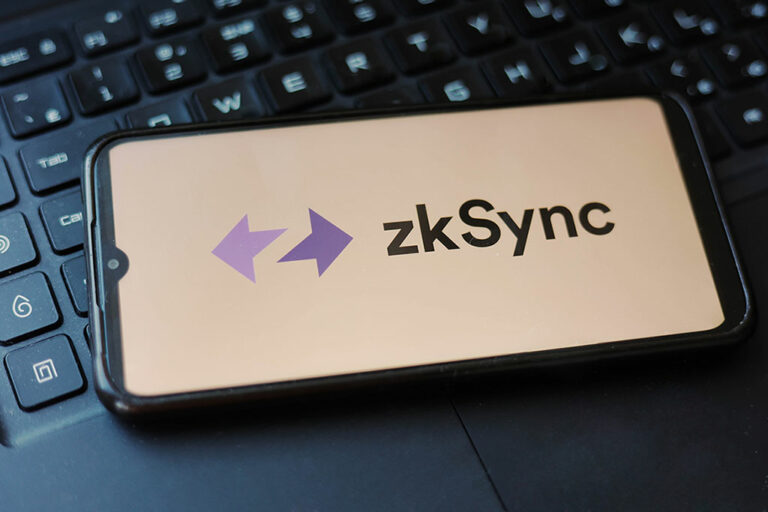The performance of zkSync’s native token ZK has also suffered amid these declines.
ZkSync (ZK), a prominent Layer 2 (L2) solution for Ethereum, is grappling with a significant decline in network activity. According to data from The Block’s dashboard, daily active addresses on the zkSync network have plummeted by 66% since June 23, reaching their lowest level of the year.
Concurrently, the number of daily transactions fell to a year-to-date low of 293,000 as of July 23. This drop suggests a marked decrease in user engagement with the platform, impacting its role in decentralized finance (DeFi) and NFT trading.
TVL Declines Despite Market Trends
The decline in user activity is mirrored by a substantial decrease in the Total Value Locked (TVL) on zkSync. The network’s TVL has contracted to $96 million, its lowest since April 2023, as shown by DefiLlama. This decline contrasts with the broader trend of rising TVL across various DeFi networks, indicating potential challenges in liquidity and user retention for zkSync.
The performance of zkSync’s native token, ZK, has also suffered amid these declines. The token recently hit an all-time low of $0.13 on July 5 but has since recovered to $0.15. However, it has fallen nearly 10% over the past week.
Technical indicators reflect a bearish outlook, with the Relative Strength Index (RSI) at 42.10 and the Directional Movement Index (DMI) showing a bearish crossover. These metrics suggest ongoing selling pressure and potential further declines in the token’s value.
zkSync Post-Airdrop User Decline
zkSync’s airdrop distributed 3.67 billion ZK tokens, or 17.5% of its supply, to 695,232 wallets. The airdrop’s immediate token liquidity set it apart from other token distributions, which typically involve lock-up periods.
Despite the large airdrop, zkSync saw a large sharp decline in network activity. The anticipated boost in user engagement did not occur, as daily active addresses and TVL continue to drop significantly. The airdrop failed to generate the sustained user interest and transaction volume hoped for.
Elastic Chain: ZkSync’s New Upgrade
Recently, zkSync unveiled its Elastic Chain as part of its 3.0 upgrade, aiming to tackle scalability and user experience issues. This upgrade expands zkSync from a single Ethereum Layer 2 solution into a network of interconnected ZK rollups. The Elastic Chain connects various ZK Chains, rollups, validiums, and volitions, under one unified system.
This new framework addresses problems like fragmented liquidity and high transaction fees by reducing the need for third-party bridges. These bridges, often costly and vulnerable, are replaced by ZK technology, which allows for smooth and affordable transactions across the network. The Elastic Chain is set to enhance zkSync’s scalability and provide a more seamless experience for users and developers.
This development was expected to act as a catalyst, attracting more users and projects to the zkSync ecosystem. However, the anticipated impact has yet to be fully realized, as the network continues to face challenges.
next